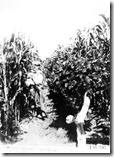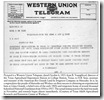Texas AgriLife Research and Extension Center at Weslaco
1923: As a response to the growing needs and with federal and state legislative authorization, the state legislature established Substation Number 15 east of the newly created town of Weslaco (named after the W.E. Steward LAnd COmpany) on 60 acres purchased by the state and another 60 acres donated by local citizens. This land was once known as Llano Grande (large plain) and had supported several thousand National Guardsmen sent by President Woodrow Wilson to quell border disputes during the period of the Mexican Revolution. The first arrived in 1915 and most had departed by 1918 to fight in World War I.

1925: Substation Number 15Ãs first supervisor, W. H. Friend, and professor Arthur T. Potts had set up the first citrus and insect trials, but also reported testing a wide variety of fruits, vegetables, legumes, cotton and sugarcane.
1927: Friend and Potts reported many research challenges: root rot, freezes, hurricanes, salty river irrigation water, marketing problems and heavy infestations of insects and plant diseases.

1924 to 1946: Facilities at Weslaco limited to a few frame buildings and residences for staff, usually numbering no more than three. Irrigation and drainage system installed.


1948: Texas Agricultural Experiment Station joined by Extension and USDA personnel.

1952: A 2-acre water reservoir constructed and a water well drilled. Both proved invaluable during 1953 drought.

1964: Name officially changed from Substation Number 15 to Rio Grande Valley Research and Extension Center, and later to Texas A&M University Agricultural Research and Extension Center at Weslaco.




